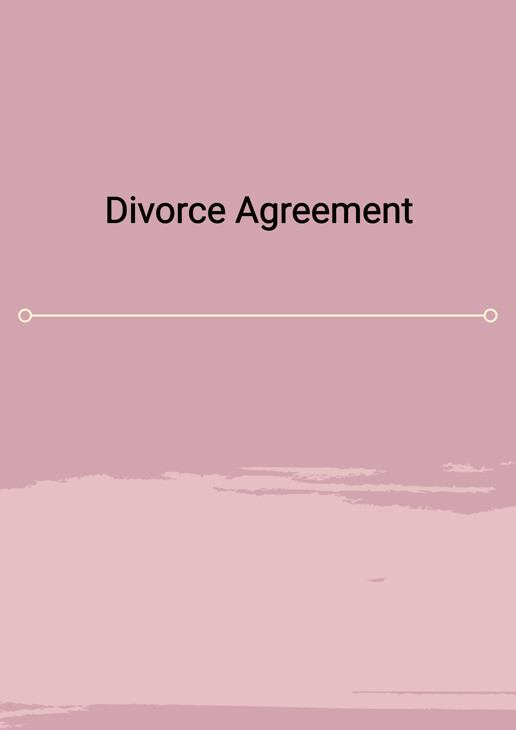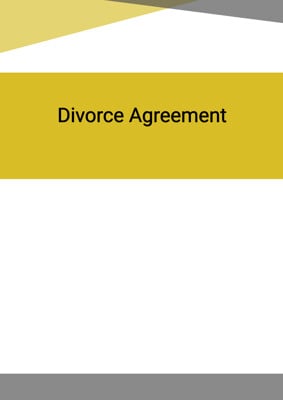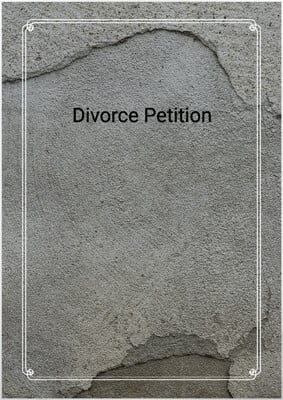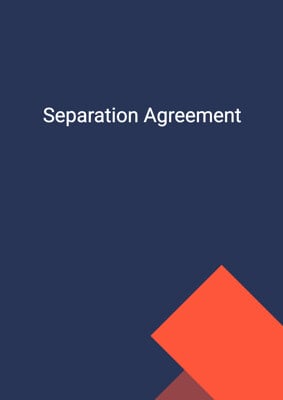How to Tailor the Document for Your Need?
01
Create Document
Fill in the details of the parties. You can click the "Fill with Member’s Information" button to complete it with information saved to your account.
02
Fill Information
Please fill in any additional information by following the step-by-step guide on the left hand side of the preview document and click the "Next" button.
03
Get Document
When you are done, click the "Get Document" button and you can download the document in Word or PDF format.
04
Review Document
Please get all parties to review the document carefully and make any final modifications to ensure that the details are correct before signing the document.
Document Preview
Document Description
The Divorce Agreement is a legal document that outlines the terms and conditions of the divorce between two parties. It is important because it provides a clear and legally binding agreement that settles all matters arising from the dissolution of the marriage, such as child custody, child support, spousal support, and the division of property.
The entire document is divided into several sections, each addressing a specific aspect of the divorce. The background section provides the context for the agreement, stating that the marriage has broken down irretrievably and that the parties have lived apart for a continuous period of at least one year. It also states that there have been no previous proceedings in any court regarding the marriage or any child of the parties.
Section 1 of the document addresses child custody. It confirms that the parties are the parents or legal guardians of one minor child and provides the child's name, date of birth, and address. It also states that no other child has been born during the marriage and sets out the terms relating to child custody, including visitation rights.
Section 2 addresses child support. It specifies the amount of child support to be paid per month and the responsibilities of each party regarding medical and dental insurance and the child's schooling expenses. It also states that the child support payment will be responsible for these payments until the child reaches the age of majority.
Section 3 addresses spouse maintenance. It acknowledges that both parties have sufficient financial status to self-support and renounces any right to seek or receive alimony or spousal support from the other party.
Section 4 addresses the division of the cohabitation property. It states that the property will be sold to a bona fide third party, with the wife entitled to a certain percentage of the proceeds and the balance to be paid to the husband.
Section 5 addresses other property. It states that all pre-marital and post-marital property, except for the cohabitation property, will be regarded as each party's separate property.
Section 6 includes miscellaneous provisions, such as the treatment of insurance policies, liability for debts and liabilities, and indemnification of the other party.
Section 7 includes undertakings by each party to accept the provisions of the agreement and to waive all claims against the other party.
Section 8 acknowledges that the parties have sought independent legal advice and fully understand the nature and effect of the agreement.
Section 9 confirms that the parties have made full and frank disclosure of their means and resources.
Section 10 states that any amendment or variation of the agreement must be recorded in a supplemental agreement signed by both parties.
Section 11 states that if any term or condition of the agreement is held invalid by the court, the remaining terms and conditions shall still be valid.
Section 12 states that the agreement constitutes the entire agreement between the parties and supersedes any previous agreements.
Section 13 states that the agreement is governed by the laws of the jurisdiction state and that each party submits to the non-exclusive jurisdiction of the courts of the jurisdiction state.
The agreement is signed by both parties and includes a schedule that outlines the specific terms of child custody, including joint custody, primary custody, exchanges, holiday arrangements, and vacation arrangements.
How to use this document?
1. Gather necessary information: Collect the required information about both parties, including their names, addresses, and any relevant details about their marriage and separation.
2. Determine child custody arrangements: Discuss and agree on the custody arrangements for the minor child, including joint custody or primary custody. Consider factors such as visitation rights and decision-making responsibilities.
3. Establish child support payments: Determine the amount of child support to be paid and the frequency of payments. Clarify who will be responsible for additional expenses related to the child's medical and dental insurance and schooling.
4. Renounce spousal support: Both parties should agree to waive any right to seek or receive alimony or spousal support from the other party.
5. Divide cohabitation property: Decide on the sale of the cohabitation property and the distribution of the proceeds. Determine the percentage each party will receive.
6. Determine division of other property: Clarify that all pre-marital and post-marital property, except for the cohabitation property, will be regarded as separate property.
7. Address miscellaneous provisions: Discuss and agree on miscellaneous provisions, such as the treatment of insurance policies, liability for debts and liabilities, and indemnification of the other party.
8. Accept the agreement: Each party should accept the provisions of the agreement and waive all claims against the other party.
9. Seek independent legal advice: Both parties should seek independent legal advice to fully understand the nature and effect of the agreement.
10. Make full disclosure: Ensure that both parties make full and frank disclosure of their means and resources.
11. Record any amendments: Any amendments or variations to the agreement should be recorded in a supplemental agreement signed by both parties.
12. Understand severability: Be aware that if any term or condition of the agreement is held invalid by the court, the remaining terms and conditions will still be valid.
13. Finalize the agreement: Once all terms and conditions have been agreed upon, the agreement should be signed by both parties and witnessed.
14. Comply with governing laws: Understand that the agreement is governed by the laws of the jurisdiction state and that both parties submit to the non-exclusive jurisdiction of the courts of the jurisdiction state.
Not the right document?
Don’t worry, we have thousands of documents for you to choose from:




















